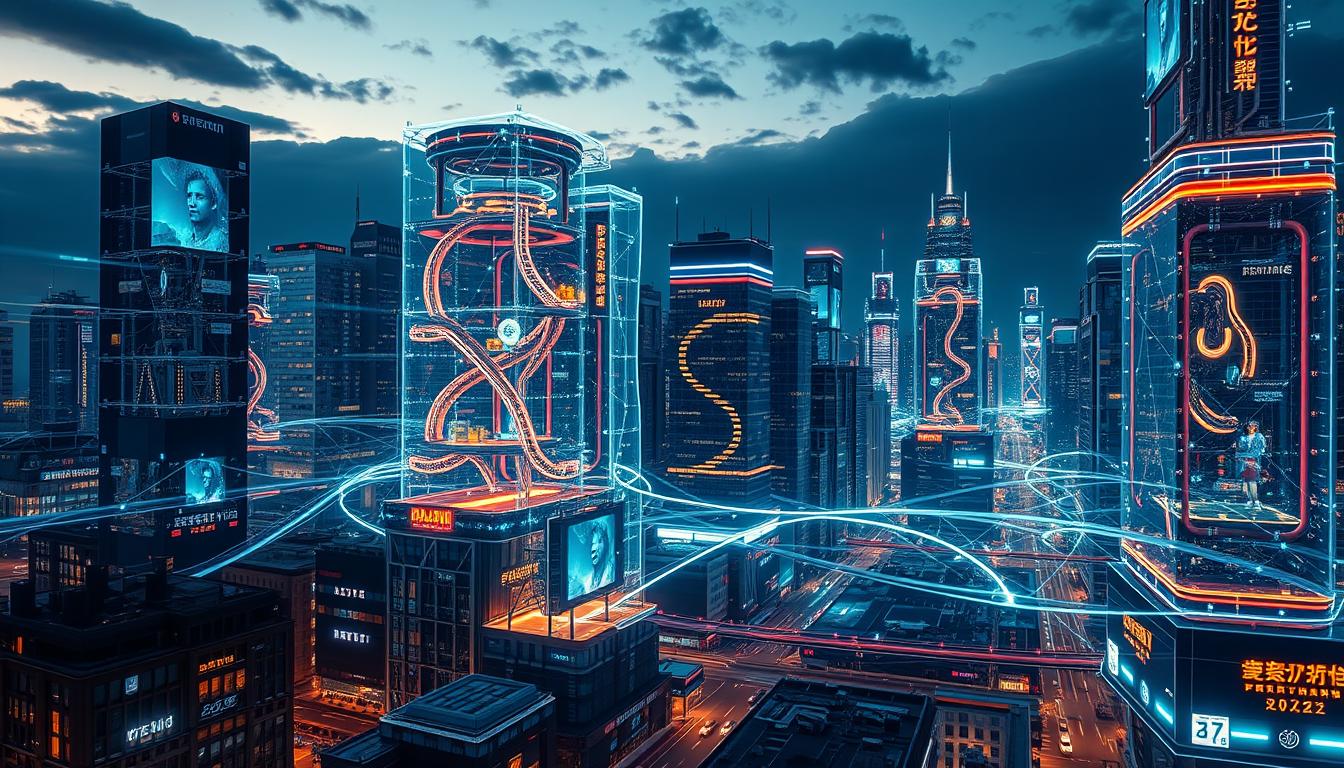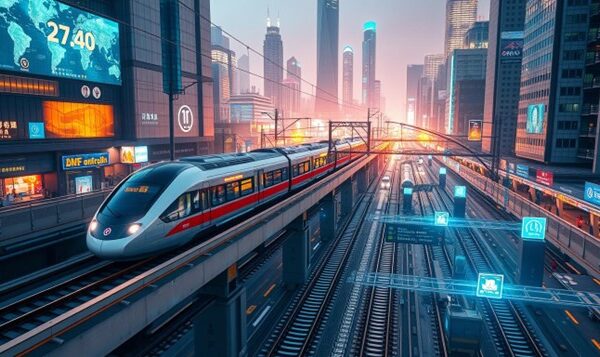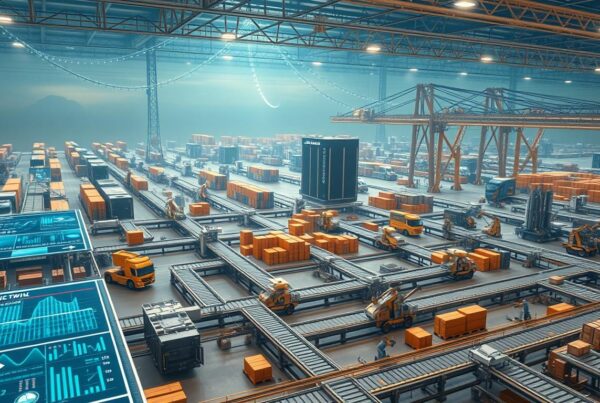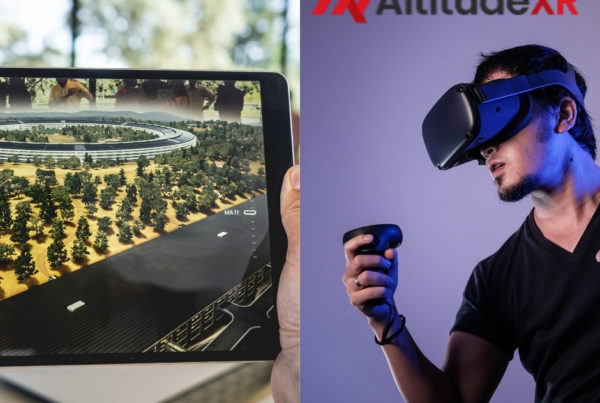By 2050, 68% of the world’s people will live in cities. These cities will use 75% of the world’s energy and 78% of its energy. This shows we need new ways to manage our cities well.
Digital twins are like virtual copies of our cities. They help us see how things work and improve them in real time. This makes them very important for making our cities smarter.
Digital twins help us plan better and make smarter choices. They also let us use data in real time to cut down on problems. This helps us use less energy and waste less, making our cities better for everyone.
Key Takeaways
- Digital twins can simulate, analyze, and optimize physical systems in real-time, making them a key part of smart infrastructure.
- 75% of global greenhouse gas emissions and 78% of the world’s energy consumption are from cities, showing we need to manage them well.
- Digital twins help us plan better, leading to smarter choices during project design.
- They let us use data in real time to cut down on problems.
- Digital twins make things work better, faster, and smarter by giving us real-time data, which is key for watching over our assets.
- Digital twins can also help cut down on costs and make people happier by letting us make things just for them.
Digital Twins Help Infrastructure Become Smarter: A Revolutionary Shift
Digital twins are changing how we manage infrastructure. They make it more efficient and green. By creating a virtual copy of real assets, digital twins help infrastructure become smarter and stronger.
This tech can change infrastructure management a lot. It lets us watch things in real time and fix problems before they start.
Digital twins are getting more popular in smart cities technology. They let us try out different ideas and predict problems. This makes cities better, greener, and more fun to live in.
Understanding Digital Twin Technology
Digital twin tech makes a virtual copy of real things like buildings or bridges. It uses sensors and data to keep an eye on things in real time.
Current Impact on Infrastructure Management
Digital twins are making a big difference in infrastructure management. Many places are using them. They help save money, work better, and make better choices.
Key Benefits for Smart Cities
Digital twins are great for smart cities technology. They make cities greener, work better, and are stronger. They help cities use less energy, throw away less, and serve people better.
- Improved sustainability
- Increased efficiency
- Enhanced resilience
Digital twins could really change how we manage infrastructure. They make it better, greener, and stronger. As this tech gets better, we’ll see even more cool uses in smart cities technology and infrastructure management.
The Technology Behind Infrastructure Digital Twins
Infrastructure digital twins use virtual modeling infrastructure and iot in infrastructure. They simulate and analyze physical systems. This helps with real-time monitoring and predictive maintenance, making repairs cheaper for U.S. infrastructure.
Digital twin technology can make infrastructure last longer and keep people safe. Important tools include Internet of Things (IoT), structural health monitoring, artificial intelligence (AI), and smart transportation systems. Each tool is key to keeping the digital twin up to date.
Some benefits of digital twins are:
- Improved infrastructure management process
- Enhanced real-time monitoring and predictive maintenance
- Potential to extend the lifespan of infrastructure and ensure public safety
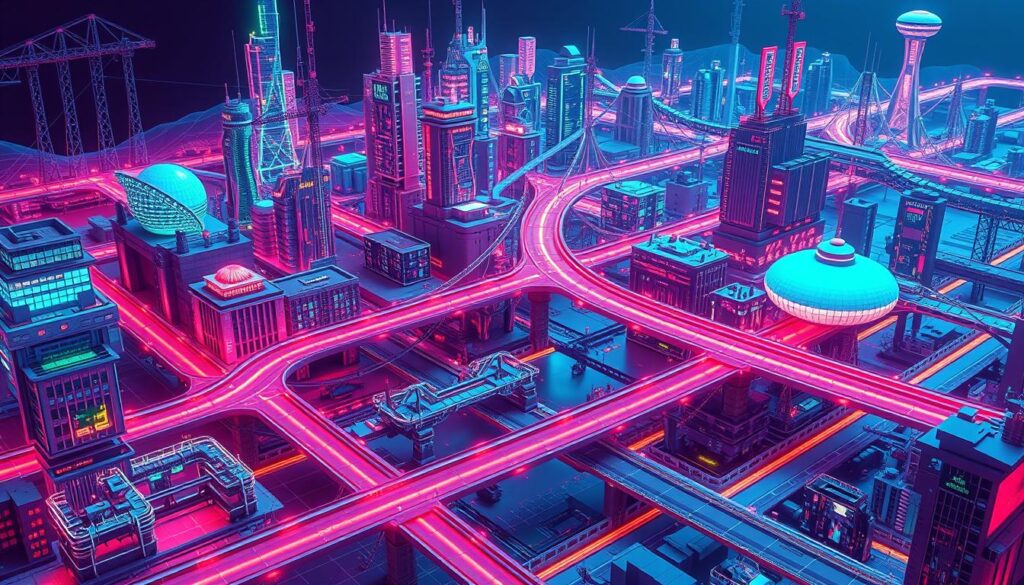
The mix of iot in infrastructure and virtual modeling infrastructure makes a connected system. This system greatly improves infrastructure management. As technology grows, so will the digital twins market. It’s expected to grow at a 50% compound annual growth rate (CAGR) from 2020 to 2030.
| Year | Market Value | CAGR |
|---|---|---|
| 2020 | $10 billion | 50% |
| 2030 | $184.5 billion | 50% |
Transforming Urban Planning Through Virtual Modeling
Urban planning tech is changing how cities are built and run. It uses digital tools to make virtual models of city infrastructure. This lets planners watch and improve things in real time.
These virtual models help planners try out different ideas. They can see what might go wrong and fix problems before they start. This makes cities run better and saves money.
- Improved resource allocation and management
- Enhanced public services and infrastructure optimization
- Predictive maintenance and reduced downtime
- Real-time monitoring and data analysis
By using urban planning tech, cities can become more efficient and green. Predictive maintenance helps save money and improve services. As more people move to cities, good planning is more important than ever.
Implementation Success Stories in American Cities
Many American cities have used digital twins to improve their infrastructure. This has led to better management, lower costs, and more green living. For example, New York and Amsterdam have seen better energy use and public transport thanks to digital twins.
Using digital twins in cities brings many benefits. These include less disruption, less pollution, and better traffic flow. These gains come from smart monitoring and predicting what will happen next.
Here are some examples of success:
- Less energy use and fewer emissions by using green energy better
- Better traffic flow with real-time checks and smart guesses
- Improved city planning with tests of different building plans
Digital twins are changing how cities work. They make cities more efficient, green, and nice for people. By using digital twins and smart monitoring, cities can get better, save money, and make life better for everyone.
Conclusion: The Future of Smart Infrastructure Management
Digital twin technology is changing how we manage smart infrastructure. It’s expected to grow a lot. The global market for digital twins in smart cities will hit over $48 billion by 2027.
Cities like New York are already seeing big benefits. Digital twins help make energy use better and control city growth.
Digital twins use smart data and predictions to change infrastructure management. They help plan traffic, predict needs, and save energy. This makes cities smarter and more efficient.
Adding AI and machine learning to digital twins will make them even better. This will help cities make quicker, smarter choices.
Digital twins will bring big changes to smart cities. They will make transportation better, help in emergencies, and save energy. They will also make infrastructure last longer and cost less to maintain.


